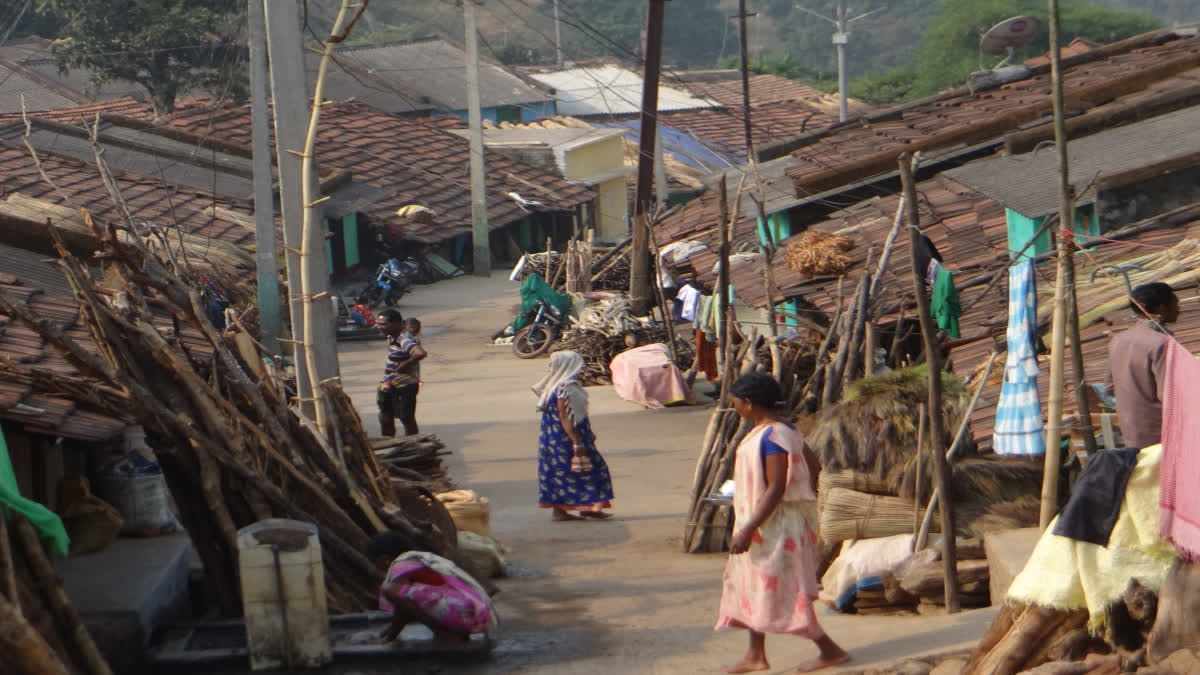Koraput: In Kotia, a farmer tends to his fields under a cloud of doubt, while a young mother walks miles for healthcare, unsure which state will claim her loyalty tomorrow. For the 21 villages of this panchayat in Odisha, the border dispute isn’t just a political battle—it’s a fight for survival and identity.
Under the shadow of the Eastern Ghats, in the disputed panchayat of Kotia in Odisha’s Koraput district, life moves with an undercurrent of uncertainty. For decades, the 21 villages that make up Kotia have been the focal point of a heated border dispute between Odisha and Andhra Pradesh. While governments spar over maps and legal documents, it’s the people here who bear the brunt of this prolonged tug-of-war, caught in a vortex of identity crisis and survival struggles.
For villagers like Basana Gemel, a farmer from Janiguda, the conflict has turned aspirations into disillusionment. Once celebrated for cultivating strawberries in this remote terrain, Basana abandoned the crop due to erratic farming conditions and poor market access. “We need long-term support to grow traditional crops like mango, jackfruit, and lemon,” he says, his voice tinged with frustration. The weekly market at Kotia remains non-functional, forcing farmers to sell to Andhra Pradesh traders at lower prices. “Kotia’s farmers need infrastructure and consistent backing—not short-lived experiments.”
The identity crisis runs deeper than economic struggles. Rajesh Nag, a youth from Doliambo, paints a grim picture of daily life. “Odisha built a hospital at Kotia headquarters, but ambulances cannot reach villages like Madkar and Phatusineri due to the rugged terrain,” he explains. Andhra Pradesh, however, operates a more accessible healthcare system, sending ambulances to remote areas. “We rely on Andhra Pradesh’s sarpanch for emergency services. Odisha’s sarpanch at Ganjeipadar, on the upper reaches, remains inaccessible to us,” he alleges.
Rajesh suggests reorganizing Kotia into three smaller panchayats—Kotia, Phatusineri, and Nerdiwalasa—so Odisha’s services can reach every corner of the valley. “We need more Anganwadi centers and housing for teachers and workers to ensure regular attendance,” he adds.
The roots of this crisis lie in history. Kotia was part of the erstwhile Jeypore Estate, and Odisha’s claim is supported by a trove of documents, including a directive from the Privy Council favoring the Maharaja of Jeypore. “Odisha submitted over 500 pages of evidence to the Supreme Court, highlighting its provision of 124 services in Kotia,” says Gadadhar Parida, former collector of Koraput. Despite these efforts, Andhra Pradesh continues to violate the Supreme Court’s 2006 status quo order by conducting elections and delivering services in Kotia.
Odisha has already lost control over regions like Pachipenta Panchayat and Bora Mutha due to weak historical claims. “Andhra Pradesh must respect the 1945 boundary map, which clearly shows Kotia within Odisha,” Parida asserts.
